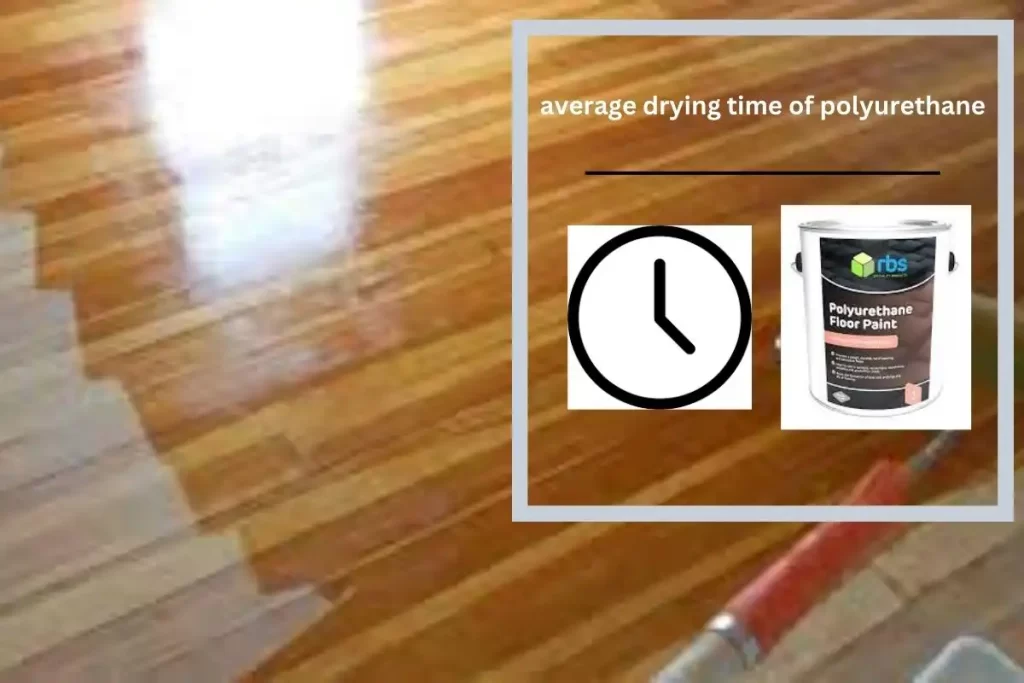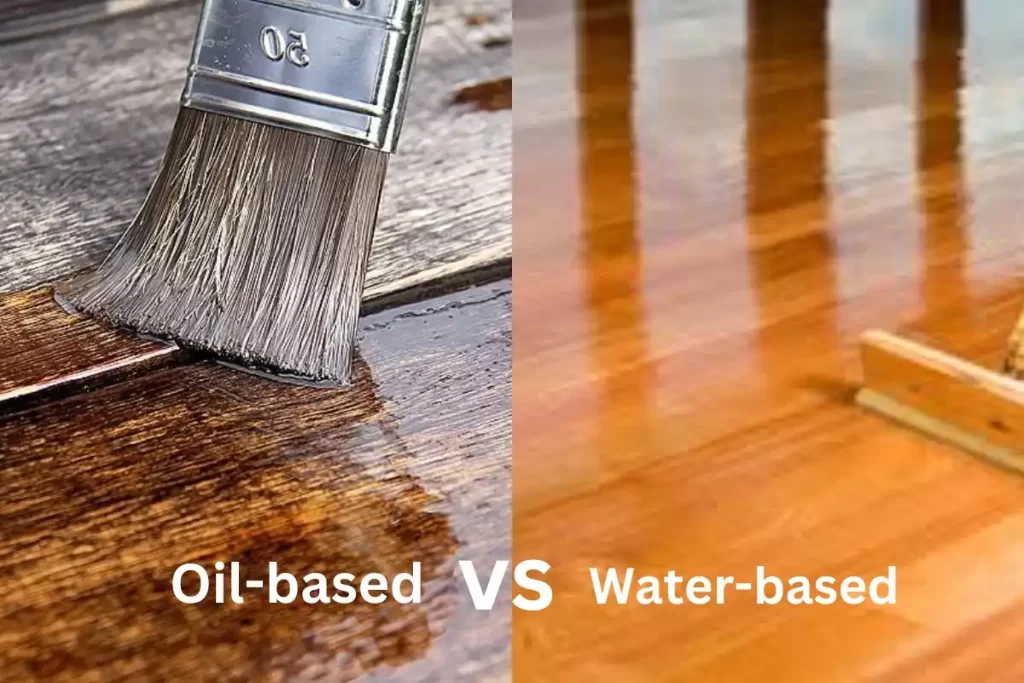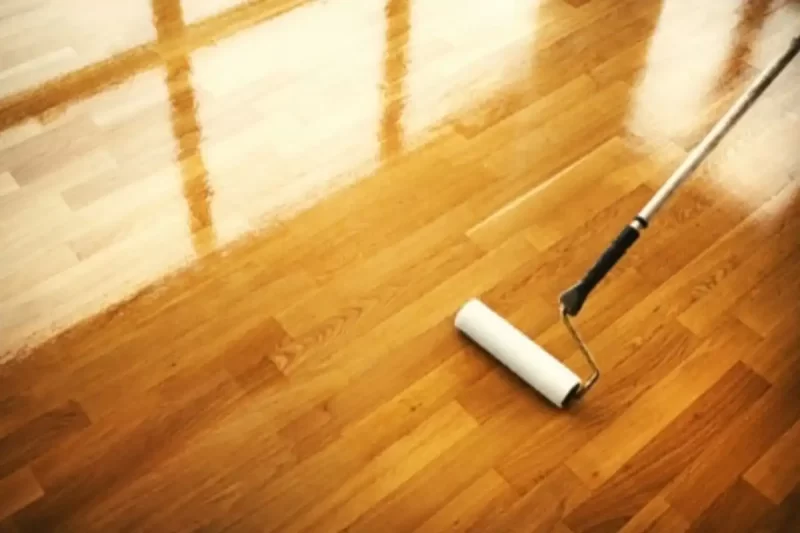Have you ever thought about the similarities between paint and nail polish? Both dress up on their respective surfaces and require a little patience. Polyurethane, a type of paint, takes a bit longer to dry than its fast-drying counterparts. You may wonder, “How long does polyurethane take to dry?” Well, like most loved-up couples or a multi-layer cake, it takes time—up to 24 hours, to dry completely.
Yup, that’s right. It’s like giving a toddler a time-out for just 24 hours, and then they’ll be back to their usual mess-making shenanigans. But don’t let the short drying time fool you. Once it’s dry, it’s tough as nails and ready to withstand anything you throw its way.
What is the average drying time of polyurethane?

For anyone who has embarked on a do-it-yourself project, one of the most daunting tasks is often the finished work. Applying a polyurethane coating to floors, furniture, or trim can be time-consuming and tedious. One of the most important steps in the process is allowing adequate drying time between coats.
Depending on the specific product being used, as well as environmental factors, the average drying time for polyurethane can range from 24 to 48 hours. While it may be tempting to rush through this step in order to complete the project quickly, doing so can result in an inferior finish.
In order to achieve the best possible results, it is important to adhere to the manufacturer’s recommendations for drying time. With a little patience, it is possible to create a beautiful and long-lasting finish that will add value and appeal to any home.
Is it the fact that different types of polyurethane dry at varying speeds?

Polyurethane is a synthetic polymer that has a wide range of applications. It can be used in everything from furniture and flooring to automotive parts and insulation. There are two main types of polyurethane:
- Oil-based polyurethane
- Water-based polyurethane
Is it the fact that different types of polyurethane dry at varying speeds? Maybe it’s the versatility of the material itself – you can use it for everything from furniture to flooring. Or maybe it’s how it looks, glossy and smooth like no other material.
Oil-based polyurethane drying time
Oil-based polyurethane is a type of finish often used on wood surfaces. This type of finish gives the wood a smooth, shiny look. It is also durable and can help to protect the wood from scratches and scuffs. One of the benefits of oil-based polyurethane is that it dries relatively quickly.
In most cases, it will be dry within 24 hours. And the next 48 hours before you can apply the second coat. However, it is important to note that this does not mean the finish is completely cured. It can take up to 30 days for the finish to cure fully.
During this time, it is important to avoid using harsh chemicals or scrubbing the surface too vigorously. With proper care, oil-based polyurethane can provide a beautiful, lasting finish for your wood surfaces.
Water-based polyurethane drying time
How long does water based polyurethane take to dry ? Water-based polyurethane is a versatile and durable finish that can be applied to various surfaces. One of the biggest advantages of water-based polyurethane is that it dries quickly. In most cases, it will be completely dry within 6 hours. Within 24 hours, it is dry to the touch, but it can take up to 30 days for the finish to cure fully.
Additionally, water-based polyurethane is available in a variety of sheens, so you can choose the level of gloss that you want. Whether you’re looking for a high-gloss finish or a more natural look, water-based polyurethane can give you the results you’re after.
5 factors that influence how long does polyurethane take to dry?
When it comes to drying time, not all polyurethanes are created equal. In fact, there are a number of factors that can influence how long it takes for this type of finish to dry. Here are seven things to remember when wondering how long your polyurethane project will take to dry.
1. The types of polyurethane you use
How long does oil based polyurethane take to dry? Oil-based polyurethanes have a longer drying time than water-based formulas, but they’re also more durable and offer better protection against scratches and stains. If you’re looking for a quick-drying option, water-based polyurethane is your best bet. It dries faster than oil-based polyurethane, but it’s not as durable and doesn’t offer the same level of protection.
Now that you know the basics, it’s time to decide which type of polyurethane is right for your project. If you need a quick-drying formula, water-based polyurethane is your best bet. If you’re looking for a more durable option, oil-based polyurethane is a better choice. No matter what you choose, be sure to read the labels carefully so you understand the drying time and application process before you get started.
2. The temperature and humidity
Have you ever wondered why some polyurethanes take forever to dry while others seem to dry in a snap? The answer has to do with temperature and humidity. You see, polyurethane comprises long-chain polymers that have to link up with each other for the coating to become hard and durable.
But the rate at which these polymers can link up is influenced by both temperature and humidity. When it’s hot and humid, the polymers can link up quickly. But when it’s cold and dry, linking up takes much longer. So, if you’re looking to speed up the drying time of your polyurethane, then you’ll want to apply it on a warm, humid day.
3. The thickness of the application
When it comes to polyurethane, the thickness of the application can have a big impact on the drying time. If you’re looking for a quick dry time, a thinner layer will be your best bet. But if you’re willing to wait a bit longer for a thicker coat, you’ll be rewarded with a more durable finish.
Ultimately, it’s up to you to decide what trade-off you’re willing to make. However, keep in mind that a thicker coat does have its advantages. Not only will it give you better protection against wear and tear, but it will also last longer before needing to be reapplied. So if you’re looking for a long-lasting finish, don’t be afraid to go thick.
4. The type of surface
It’s no secret that the type of surface you’re working with can have a big impact on the final product. When it comes to polyurethane, the type of surface you’re working with is a huge factor in the drying time. Depending on the angle you’re coming from, this could be seen as a good thing or a bad thing.
If you want to finish the job quickly, a porous surface will be your best bet. The polyurethane will soak into the surface, allowing it to dry faster. However, if you’re looking for a more durable finish, then a non-porous surface will be your best bet. No matter your goal, it’s important to understand how the surface type can affect the drying time of polyurethane.
5. The ventilation
When it comes to drying time, ventilation is key. That’s why polyurethane is often used in well-ventilated areas like basements and garages. By allowing fresh air to circulate, the drying process is accelerated, and the finish can cure more evenly.
However, too much ventilation can also be a problem. If the air is too dry, the polyurethane will dry too quickly and produce a cloudy or streaked finish. Ultimately, finding the right balance of ventilation is essential for achieving a perfect finish.
By taking these factors into account, you can get a better idea of how long it will take for your polyurethane project to dry. And now that you know what affects drying time, you can plan accordingly so that your project turns out just how you want it.
Can you speed up the drying process for polyurethane?
You’ve just applied the final coat of polyurethane to your woodworking project, and now you’re eager to see the results. But there’s one problem: you need it to dry quickly to move on to the next step. Luckily, there are a few things you can do to speed up the drying process for polyurethane.
Here are 7 tips to help you out:
- Apply a thin layer. A thick layer of polyurethane will take longer to dry than a thin layer. So if you’re in a hurry, make sure to apply a thin coat.
- Use a hair dryer. If you have a hair dryer, you can use it to speed up the drying process. Just set it on the lowest setting and hold it about 12 inches away from the surface of the wood.
- Increase the room temperature. This will help the polyurethane to cure faster. You can do this by turning up the heat in your home or using a space heater in the room where the project is located.
- Use fans. Fans will help circulate the air and speed up the drying process. If you have access to a fan, make sure to use it.
- Place the project in direct sunlight. Sunlight will also help speed up the curing process for polyurethane. Just make sure that the area is well-ventilated so that the fumes don’t get too concentrated.
- Use an ultraviolet light source. Ultraviolet light helps polymerize plastics and will also speed up the curing process for polyurethane. You can find UV bulbs at most hardware stores or online retailers that sell woodworking supplies.
- Be patient. Finally, remember that rushing the drying process for polyurethane can cause problems like bubbles or imperfections in the finish. So even though it might be tempting to try and hurry things along, it’s best to let it dry naturally at its own pace.
How much does it cost to apply polyurethane?
Polyurethane is a type of resin that is often used as a protective coating for wood floors. It is durable and can resist scratches and scrapes, making it a popular choice for busy homes with pets or small children. But what many people don’t realize is that polyurethane is also a pretty pricey investment.
The cost of applying polyurethane can range from $200 to $600, depending on the size of the project and the type of finish you choose. So before you commit to this home improvement project, be sure to do your research and understand all the costs involved. Otherwise, you might be in for a nasty shock when it comes time to pay the bill.
Frequently Asked Questions
There are a few ways to tell if polyurethane is dry. One is to touch the surface of the wood. If it feels tacky or sticky, then it’s not yet dry. Another way to tell is to look at the finish. If it’s still cloudy or wet-looking, it’s not yet dry. Finally, you can try the “nail test.” Simply press a nail into the surface of the wood. If it leaves a dent, then the polyurethane is not yet dry.
You should avoid sleeping in the house for at least 24 hours after applying polyurethane. The fumes from the product can be harmful, so it’s best to wait until they have dissipated before spending any extended period of time in space.
The ideal temperature for applying polyurethane is between 70 and 80 degrees Fahrenheit. If it’s too cold, the product will take longer to dry. And if it’s too hot, the heat can cause the polyurethane to bubble and not cure properly.
Conclusion
So, have you been wondering how long does polyurethane take to dry? Whether tackling a woodworking project or revamping a piece of furniture, knowing the drying time is essential. Remember these key points – factors like temperature, humidity, and coat thickness all play a role in the drying process. Be patient and always prioritize safety when working with polyurethane.
Stay curious, keep learning, and read our blog regularly for more expert advice like this! Don’t hesitate to join the conversation by sharing your experiences with drying polyurethane. Comment below, and let’s spark a lively discussion on this topic. So, are you ready to achieve that perfect finish? Dive deeper and explore our wealth of information on polyurethane and more!

